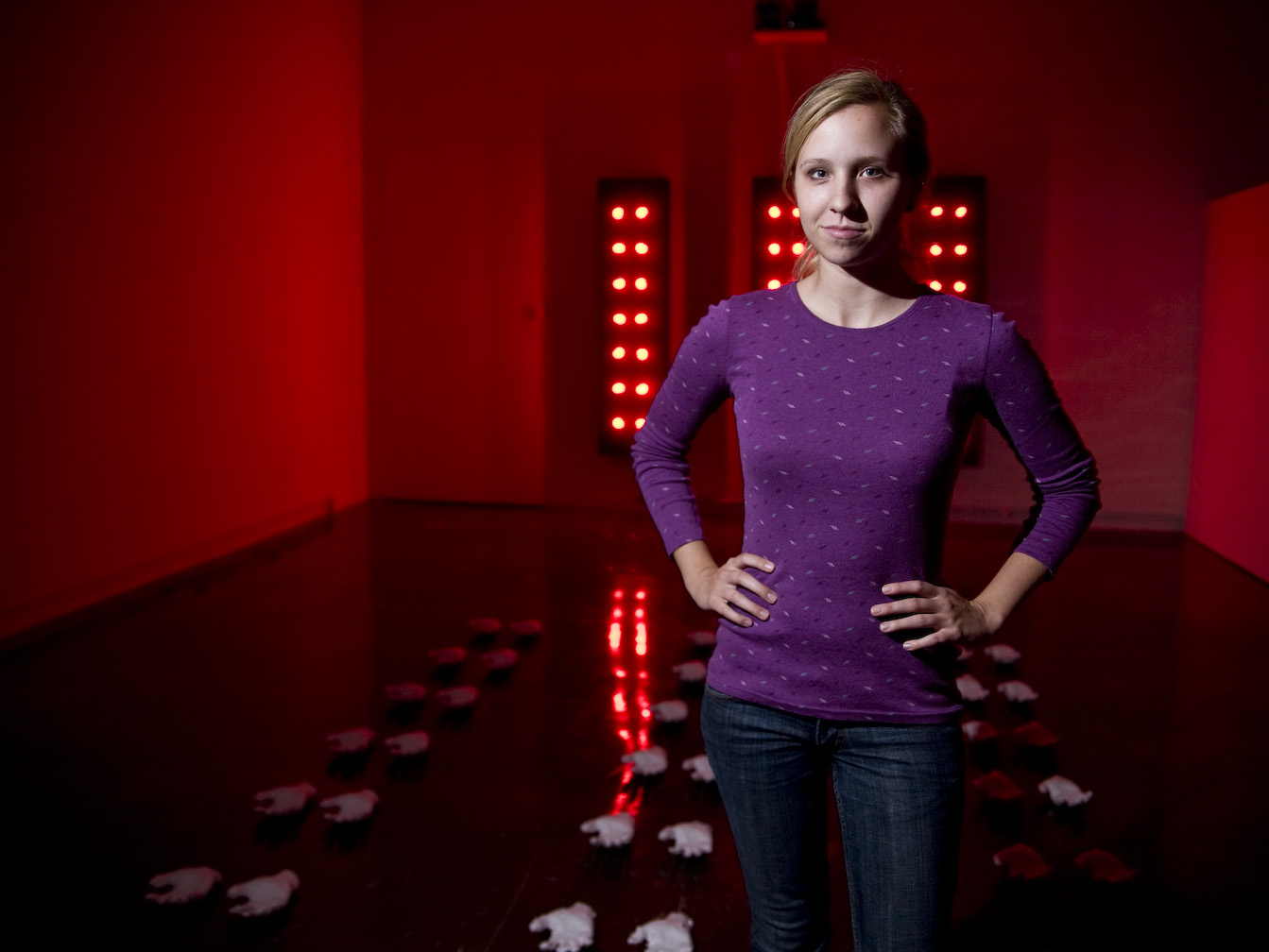Unbeknownst to some of the Biola community, there are art studios located on campus.
The McNally junior high locker room houses three studio rooms, the first and most obvious being the painting studio. It faces the rest of the McNally campus and is marked as “91.”
The studio keeps its humble gymnasium history alive with shower drains, sloping floors, bare water pipes and a mysterious chain-link cage.
Next is the interdisciplinary studio, holding somewhat of a mediatory position between the painting and design studios. Complete with cubicle dividers, it is reminiscent of a 1970s journalistic office (think “All the President’s Men”).
It would even pass as one if it weren’t for the smell of enamel paint and handmade paper hanging from the florescent lights.
The third studio, intended for design students, is often the most overlooked, due to the fact that it is on the far end of the studio building, facing the tennis courts. Its remoteness even keeps some art majors ignorant of the studio’s existence.
The heavy, windowless door gives off a rather sinister vibe, but opens to reveal a cool yet stale void. Dimly lit by the small windows near the ceiling, it is a retreat from the heat of the surrounding parking lot.
Senior Jerelyn Barber opens the door. After a quick greeting, she returns to her work, her small frame hunching over a long metal table centered in the room.
On it lies a long black box in which two lines of gaping sockets are drilled. The opposite side reveals a zigzag of black and white, where wires and electric tape are conjoined. Barber silently holds up a dark colored light bulb, probably red. She then shifts the whole box towards herself.
The movement makes the tattoos on her bare left shoulder twitch. One is an outline of Texas, her home state, with “1830” printed inside it. The other spells “River,” the name of her beloved cat.
Barber is serious about what she loves: Texas, her cat and her particular way of making art. It may be mysterious at times, but is definitely alluring.
Always one to blur distinctions, her senior show, “Forfeit,” now in the campus gallery, breaks away from her graphic design emphasis by combining sculpture, video and audio recording.
The three boxes rigged with lights correspond with the size of the human body, not explicitly like caskets but there is a foreboding morbidity to them. Lines of numerous plaster hands, atrophied and groping, follow the lines of lights towards a triptych video projection.
“Like an altar,” she says.
Forms from the ether flit on the screen like distant fears drawing closer. The word “hallelujah” loops through the gallery space with slightly off-kilter diction. It’s all some type of novel rite, a never before seen ritual that has a strange sheen of familiarity.
In the design studio, Barber explains the basic ideas behind her show.
“At first I was a lot more concept driven,” she says.
Now she has allowed herself more room to explore atmospheric feelings, and opens the installation up to a broader possibility of meanings and particular experiences. Though she has digressed a bit from the initial concept, the main idea has remained.
“Evil is real,” she says crisply. “I’m trying to get people to believe evil is real.”
This is the cold dark spine that runs through the work: an observance of evil, and even a Taoist-like reminder for its necessity.
“Without it we wouldn’t know what good is,” she concludes.
When asked where she got the urge to do all this, she pauses. Her boyfriend walks into the studio. The open door sends a spear of light into the room and with it a procession of dust particles drift upwards.
“How did I get the idea?” she asks him, as he abandons his fisherman’s cap on the table.
Before he can answer she exclaims, “You know what it was? It came from pictures of nebulae!”
She looks off into the corner of the studio, as if there were a minute cosmological phenomenon happening right there.
“I’ve always loved them,” she says. “They’re beautiful.”
In reality, these delicate tendrils of color, so distant from the particularities of our little world, are unfathomably catastrophic.
“They’re this toxic part of the universe,” Barber goes on. “Stars are exploding, being ripped apart, but at the same time new planets are forming.”
She pauses once more, comes back from the cosmos and says, “That led me to think of the balance that we have to acknowledge.”
There’s a tone of resolve in her voice. The acknowledgement had to be made.







